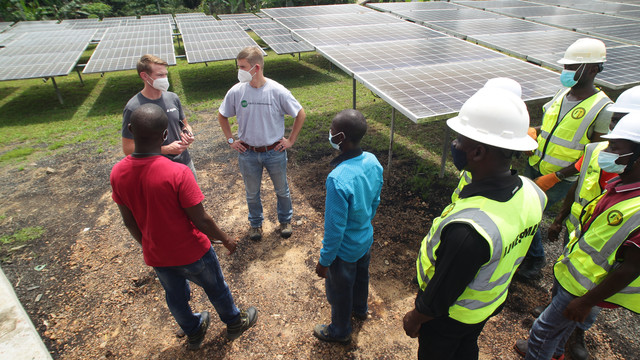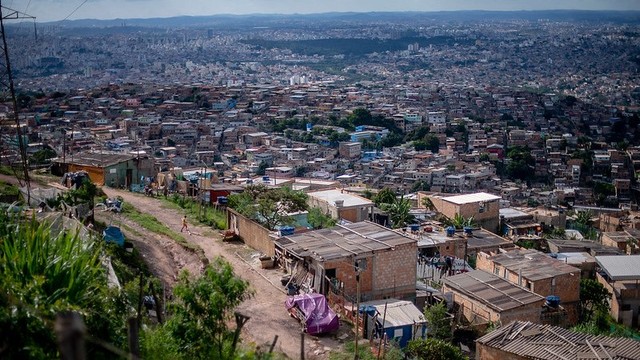Driving change by supporting action at the local level
A new mapping project highlights the importance of local action in delivering global change


A new map produced by IIED shows seven types of innovative governance. Click on the image to see the map (Image: IIED)
This year, world leaders have shown their collective political will to chart a course to a fairer, more sustainable world.
In September, representatives from the 193 countries making up the United Nations (UN) came together in New York to agree a set of 17 Sustainable Development Goals (SDGs) to guide the international development agenda for the next 15 years. This month, on the other side of the Atlantic in Paris, they will once again gather to agree on action to tackle climate change.
Securing any deal at this scale is impressive, and reflects months and years of preparation, consultation and negotiation to find a form of words that all countries will commit to. But making a commitment is not the same as fulfilling it.
For both the SDGs and any climate agreement, when it comes to delivering on goals and targets, governance and institutions matter. That is to say that both the way in which rules, norms and actions are decided and put into practice, and the individuals and organisations involved, are important.
A call for local leadership
In both cases, a focus on local leadership is critical – however valuable it is to get high-level buy-in, it is arguably even more important to empower the local action that enables delivery. The impacts of climate change and poverty are felt by individuals, households and communities in diverse local contexts; the solutions to these problems must similarly come from these most-affected people.
It is a fact of the world that power and resources tend to rest in the hands of the few, largely at global and national levels. And governments often resist re-distributing them to the local level because decentralisation frequently means a loss of patronage and influence. But there are many reasons to make the shift:
- It puts power in the right place to bring about change
- It is often easier to get things done locally (PDF). Indeed, all development interventions depend on local organisations because in practice much of the responsibility for delivering health, education, sanitation and water lies with municipal and other forms of local government
- Local decision-making can be better tailored to local diversity and opportunities, as well as differences in people, culture and livelihoods, and
- Holding rulers to account is often easier (PDF), because the connection between the governors and the governed is more direct. That is not to say there are no governance issues at a local level – corruption and vested interests still come in to play, but judging whether election promises are put into effect is often easier.
Mapping innovation
The case for including local people and institutions to tackle environment and development concerns is not new. And at IIED, we have long emphasised the need for local organisations to have a central role in designing and delivering development goals.
A new interactive map uses examples from our work, and that of others, to show how effective action by locally-rooted organisations has proven to secure development and environmental benefits for communities.
The map describes seven tried and tested methods for empowering local communities and redistributing power and resources to the local level. And for each one, it points to examples from Asia, Africa and Latin America that have successfully delivered a range of outcomes. There is also the opportunity for other examples of innovative governance projects to be suggested to be added to the map.

A map on innovative governance uses examples to show how strengthening local institutions has proven to secure benefits for development and environment.
Scaling up success
Scaling up these successful pockets of innovation relies on the ability of donors, governments and others to overcome a range of challenges and prejudices and adopt new policies and practices. This includes, for example:
- Rethinking central, delivery-driven development practices that often overlook available local capacity (PDF)
- Addressing governance and delivery models within the UN Framework Convention on Climate Change (UNFCCC) that are based entirely at the level of nation state with limited recognition or identification of roles for sub-national governments and non-state actors
- Ensuring that donor funding – including new mechanisms to support climate change mitigation and adaptation – recognises the specific needs of local organisations and develops frameworks to address them. For example, by allocating funds at municipal or district levels; or by creating funds from which urban and rural poor can draw directly
- Addressing underlying variables, including land rights, national and international partnerships and local knowledge, and
- Our experience – and that of our partners – tells us that wherever successful development interventions have been carried out or living standards are high, local governments and organisations have played a part in the success.
A growing number of practitioners, donors and researchers are also waking up to the need for locally-led development.
The US government, for example, has pledged to direct a third of development funds to 'local institutions' (PDF) – including national ministries, local government bodies, and local organisations, from universities to farmers' associations to businesses – by 2015.
The international commitment to tackling both poverty and climate change is commendable. But sustainable development is not simply a technocratic delivery issue. Recognising the importance of local institutions and governance will be critical in delivering on both the SDGs and any global climate change agreement.
Camilla Toulmin is a senior fellow at IIED. This blog was written with contributions from David Dodman, acting head of IIED's Human Settlements Group, and Mike Day, visiting researcher at IIED.



